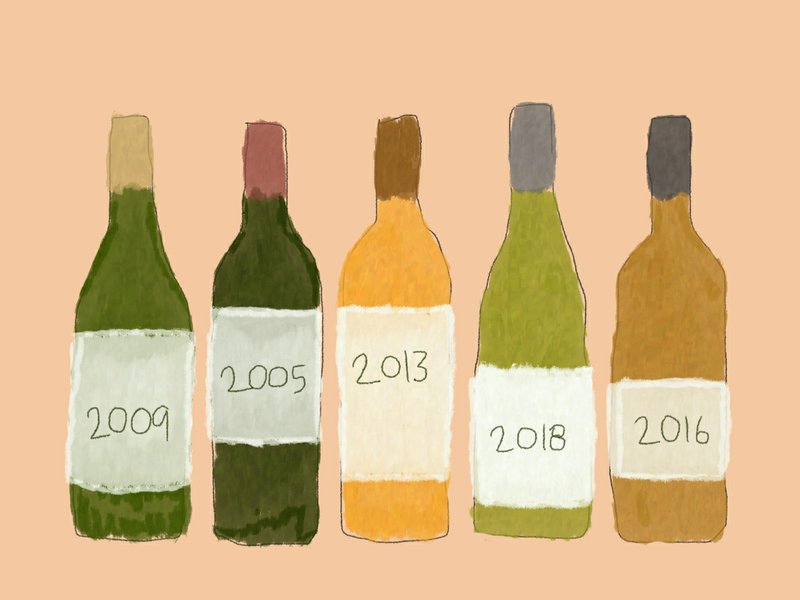Does a wine's vintage matter? And are some better than others?
The short answer to both is yes.
A bottle's vintage refers to the grapes' year of harvest, not the year it came to market.
Grapes, as with most agricultural crops, are at the mercy of the weather. When Mother Nature provides ideal growing conditions — a balance of sun, rain, cool, warmth at just the right times during the growing cycle — the grapes thrive. Disrupt the balance and the year's crop will be affected.
If it rains at the end of a growing season, it will plump the grapes with excess water resulting in grapes at harvest time with less flavor and poor concentration of sugars. If there is frost or hail early in the growing season, it can kill the budding grapes, devastating the crop. Rain and moisture early in the season can increase the chance of rot on the grapes.
Vintage matters more in wine from some regions than others. The reason so much emphasis is placed on French wines' vintage is because of the strict laws governing the growing of grapes. A perfect example is water. Most French producers are not allowed to use any type of irrigation. If it doesn't rain, the grapes don't get water. On the other hand, most wine-growing regions in the world do have the option to bring out the sprinklers. This makes the growing cycle much more challenging for those with strict laws and it makes their ''good year" wines highly prized and sought after.
The next time you contemplate what to buy, my best advice is to ask yourself: Are you looking for premium wine suitable for cellaring or a special occasion? Or are you interested in an everyday drinking wine? For a special occasion, opt for an older (more expensive) vintage. But for everyday drinking wines always buy the most recent vintage to ensure the freshest quality. The vast majority of wines are meant to be consumed fresh.
However, even vintage wines intended for aging will eventually peak and decline if not consumed.
When to open a cellared bottle is a question many of us struggle with. The following is a sample from Wine Spectator's Vintage Charts. I opted to look at Napa Valley vintages of wines meant to be aged, (aka your higher-priced splurge wines.) For the complete vintage list, click here.
2007 — Drink Now or Hold — "Textbook year; small crop, ideal ripening, wines defined by complexity and plush tannins."
2013 — Drink Now or Hold — "Practically a flawless growing season, with moderate temperatures throughout and no heat spikes or rain. Earliest harvest in 25 years started in August, but Indian summer conditions allowed growers to pick blocks as they wanted through late October. Wines brim with fruit and structure. A no-brainer benchmarks."
2016 — Hold — "The final drought-influenced vintage of the run since 2012, this time without serious heat spikes. Rockier soils and drier spots ripened first, while heavier soils allowed for longer hang time. Wines show intense fruit against the backdrop of their varying terroirs; crop still down from normal."
Lorri Hambuchen is a member of London's Institute of Wines and Spirits. Contact her at the Arkansas Democrat-Gazette, P.O. Box 2221, Little Rock, AR 72203, or email:
Food on 10/16/2019

